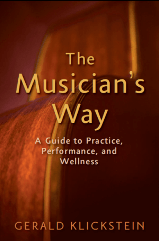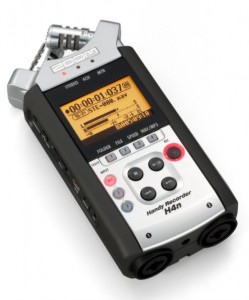 “There can be so much to cover in a practice session that it can seem overwhelming.”
“There can be so much to cover in a practice session that it can seem overwhelming.”
–The Musician’s Way, p. 6
Even for professional musicians, it isn’t easy to manage large numbers of practice tasks.
But whatever our level of musical development, all of our practice goals stem from two fundamental branches.
One branch involves sharpening our functional skills by working on technical exercises, practicing sight-reading, and so forth.
The other branch deals with mastering repertoire and preparing it for performances.
To help us organize our tasks and practice efficiently, I divide each branch into distinct zones.
Mastering Repertoire & Building Skills
For repertoire and orchestra excerpt practice, I employ three zones, each of which encompasses the distinct tasks involved in maturing music to stage-ready condition. I label those zones, New Material, Developing Material, and Performance Material.
I split skill-building work into two zones: Technique and Musicianship.
Capable musicians balance out their practice among those five zones. In that way, they continually learn new pieces, keep older ones stage-ready, and refine their technical and musical powers.
Many musicians, especially students, benefit from documenting their practice aims in each zone. For that reason, the Downloads page at MusiciansWay.com offers free practice sheets, logs, and more.
I also recommend self-recording in practice with devices such as the Zoom H4n (audio only) or Q4n (audio & video).
Below, I briefly summarize strategies and objectives for each practice zone.
The 5 Practice Zones
1. New Material: Divide a piece into sections, establish an interpretive & technical plan, and then work deliberately in sections at slow tempos. Solve problems as they arise
2. Developing Material: When we can easily execute a new piece at a slow tempo, it graduates to the Developing Material zone. Then, we increase tempo, refine our interpretation, and, if appropriate, memorize.
3. Performance Material: Once a composition nears its final tempo and is performance-ready, it reaches the Performance Material zone. Here, we practice performing it, maintain our memory, and continually elevate our interpretation.
4. Technique: In this zone, we tackle exercises and etudes, polish scales and arpeggios, and target weaknesses that limit our range or velocity. A metronome and mirror are essential aids.
5. Musicianship: The Musicianship zone incorporates sight-reading practice, rhythm drills, improvisation work, theory and ear training practice, and, for some performers, the development of composing and arranging skills. For most students, I include in this zone listening assignments as well as music literature and history study.
Allocating Time among The 5 Practice Zones
How much of our practice time should we devote to each zone? It depends on our goals and schedules.
To view a sample practice sheet showing how one student allocated three hours of daily practice time across the 5 zones, see page 9 of The Musician’s Way.
Regardless of whether you have three hours available or not, here are some guidelines applicable to all of us:
Repertoire Practice
In general, it’s best for us to have few titles at any one time in the New and Developing Material zones and amass large numbers of accessible, concert-ready pieces in the Performance Material zone.
In that way, we build large repertoires and always have ample repertoire prepared to perform. Moreover, students can master nume
As a high-stakes concert or audition date nears, we might focus exclusively on Performance Material, deferring work in the New and Developing Material zones. When no performance obligations loom, we might allocate the bulk of our repertoire and excerpt practice to New and Developing pieces.
Technique & Musicianship Practice
All of us need to spend time each day maintaining and developing our skills.
Students have to devote significant amounts of time to the Technique and Musicianship zones to build up higher levels of proficiency. Hence, I recommend that they and their teachers document daily or weekly tasks using a practice sheet, notebook, or log.
Veteran pros, on the other hand, might focus more on maintaining their abilities and therefore work steadily but less intensively in these zones.
Whatever our levels of ability, we continually have to adjust how much we practice in each zone according to our needs and the time we have available. And that pursuit of balance becomes easier as we gain facility with practice and performance skills.
In sum, by using this five-zone structure, I find that we can uncomplicate our practice organization and fuel our motivation to work, thereby growing our creative output throughout our lives.
See Part I of The Musician’s Way for detailed practice guidelines suited to each zone.
Related posts
7 Deep Practice Strategies
Assessing Your Practice Habits
The Power of Specific Goals
Starting Practice with Intention
Varied, Distributed, and Interleaved Practice
© 2017 Gerald Klickstein
Photo © Africa Studio, licensed from Shutterstock

